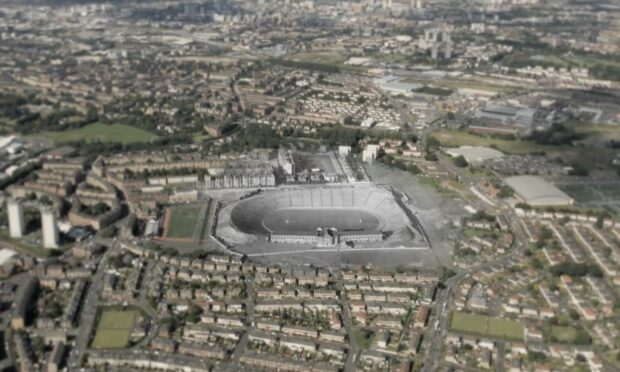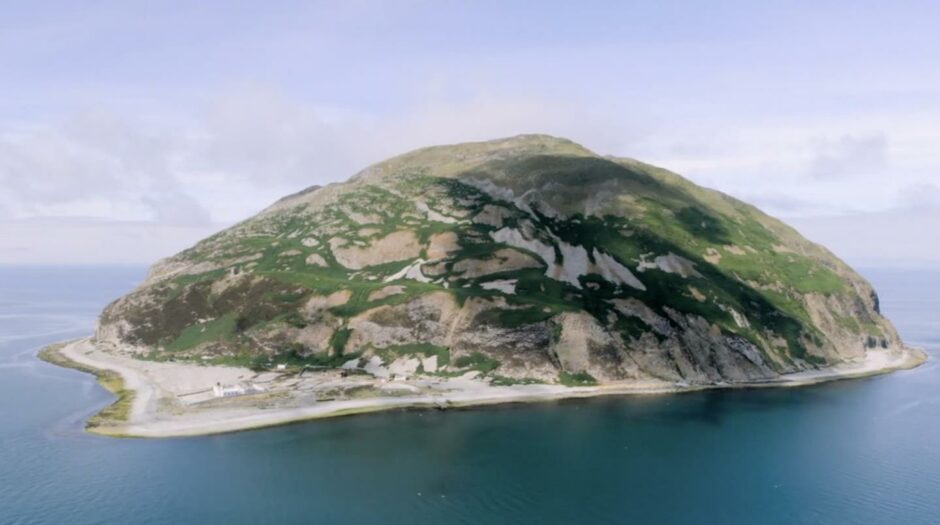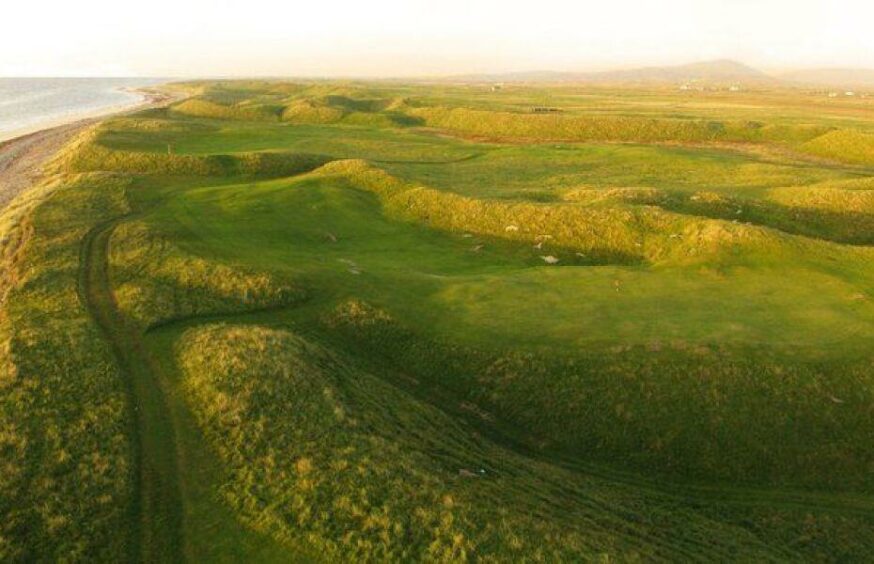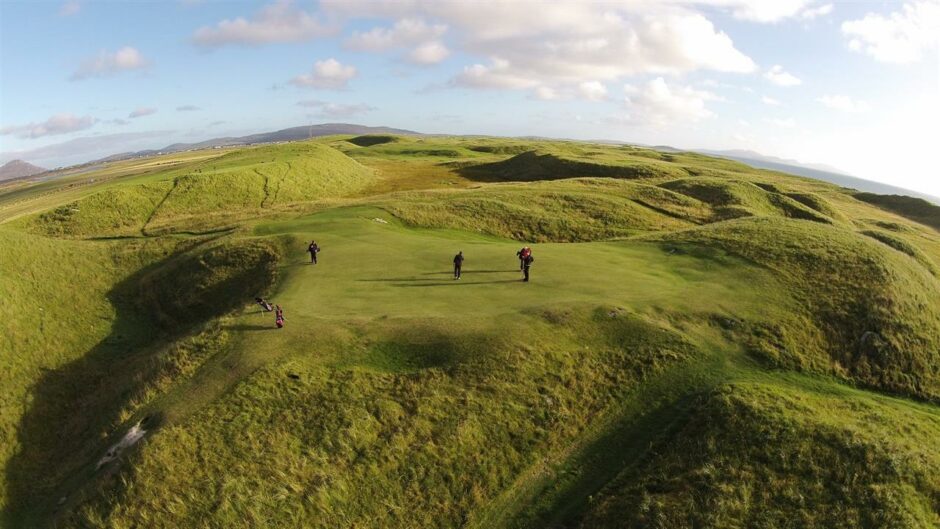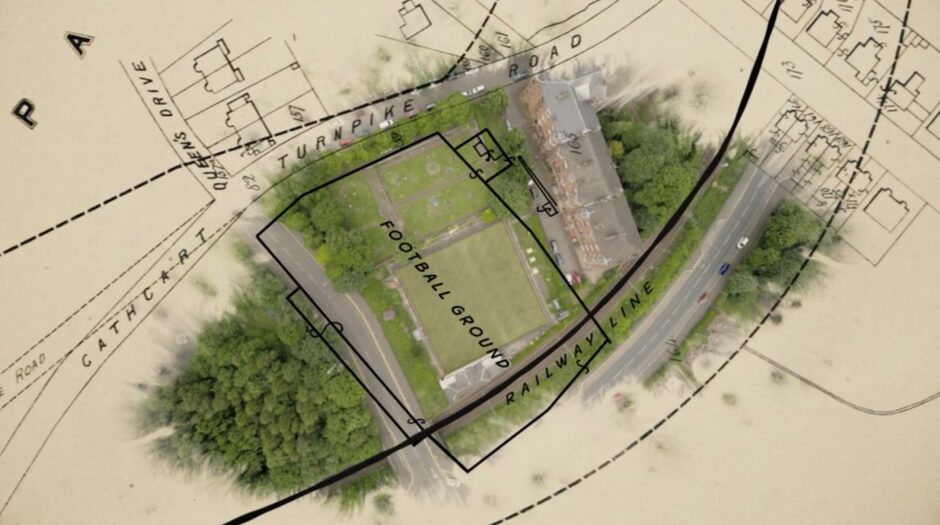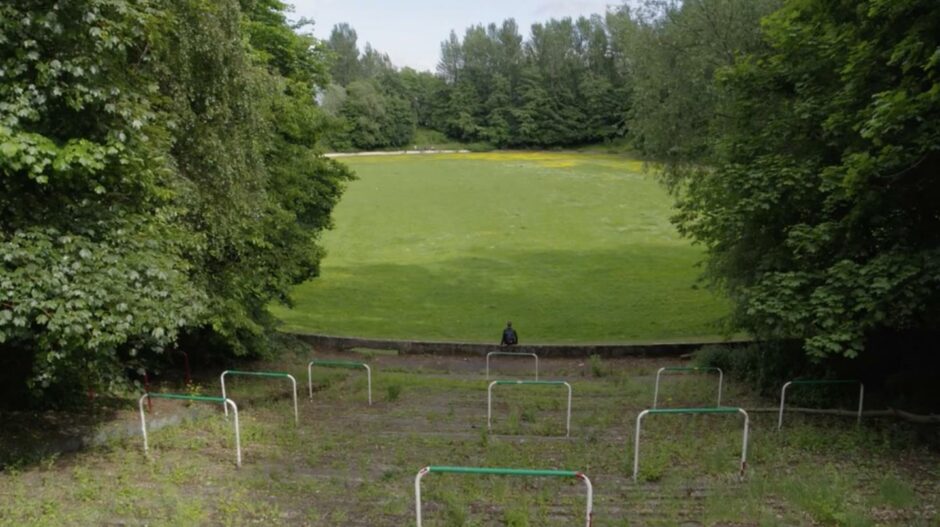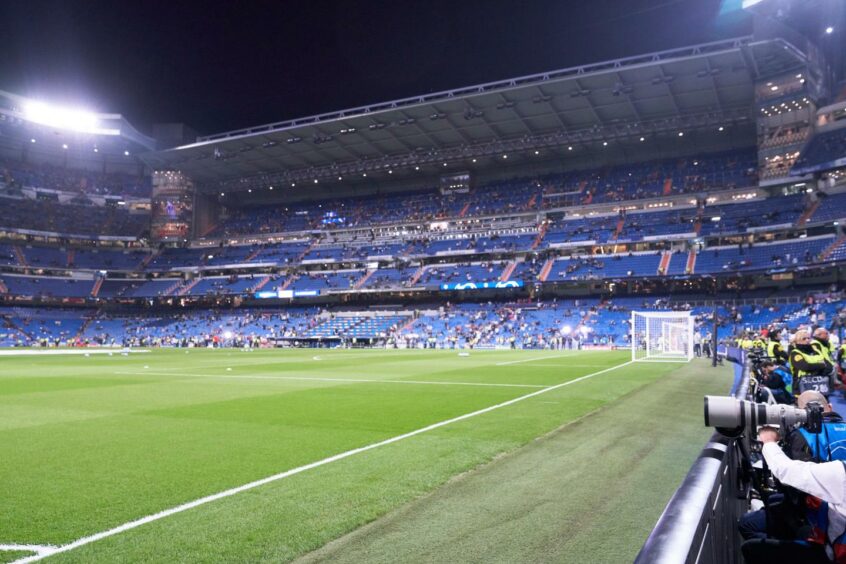Jamie Crawford has never been interested in keeping his feet on the ground and especially when there is the chance to highlight the beauty of Scotland from the stratosphere.
The TV presenter has established a reputation for creating spectacular programmes, whether covering social history, the arts, battle sites or remote rugged places, and demonstrating from the air how his country’s landscape has changed dramatically throughout the 19th and 20th centuries.
But now, in his latest foray for Scotland from the Sky, he has turned his attention to sporting matters and the result is an enthralling interweaving of the past and the present in a variety of different pursuits.
These range from the world-class curling stones made with ancient granite from Ailsa Craig and the wild splendour of Askernish golf club in the Western Isles to an archaeological investigation into a bowling club in Glasgow that was the original setting for Hampden Park.
There is plenty here to whet the appetite and stimulate the little grey cells, as I discovered when I caught up with Jamie for a chat.
Curling used to be a sport played outside across hundreds of different frozen ponds, rivers and lochs from the Highlands to the Borders.
In those days, when winters sent temperatures tumbling many degrees below zero, it was a common sight for scores of participants, officials and spectators to stand safely on pack ice in December and January for hours on end without any danger of them suffering a watery grave.
But, although Cop26 is showing the impact of global warming – and the game is no longer played outdoors except in exceptional circumstances such as the Big Freeze of 2010 – many of Scotland’s best performers, in both the men’s and women’s realm, remain at the pinnacle of the sport.
It is played with pieces of Scotland
Jamie said: “When we went to Ailsa Craig, it was fascinating to look at the precious raw material which is providing curling stones for such elite competitions as the World Championships and the Winter Olympics.
“But I also learned just how long people have been playing this in Scotland with documents dating back as far as 1511.
“And it became clear that the Ailsa Craig cheeses (as the stones are known) have conquered the world.
“I love the fact that this is a game which is quite literally played around the globe with little pieces of Scotland.
“And that is one indication of how our landscape has left us with a situation where a hard lump of rock in the Irish Sea is still providing us with material which is now precision engineered to Olympic standard.”
If curling has devotees, everywhere from Canada to Japan, who enjoy the art of rinkmanship, golf is one of the myriad things Scots gave the world.
All of us, even those who don’t know a sand wedge from a sandwich, are familiar with such venues as St Andrews, Carnoustie and Muirfield.
But Jamie made the journey to a more obscure setting – many miles off the beaten track – when he visited Askernish in South Uist: one of those places that looks like it could double for another planet in a sci-fi movie.
Yet, it boasts a wonderful golf course, designed by the legendary Old Tom Morris, who stamped his imprint and left legacies all across the globe.
However, for many years, nobody was really sure where this site was. It missed the first ordnance survey map and it was a bit like a mirage.”
Jamie Crawford on the first Hampden Park
Jamie soon discovered that you have to be a tough cookie to deal with the rigours of golf in the Western Isles, both on and off the course.
He said: “The weather was glorious when we arrived in June – on Midsummer’s Day – and it looked as if we would have the perfect conditions for filming the next morning.
“But then, in the space of a few hours, it all changed and it was a real test for us.
“However, that is one of the great things about travelling to somewhere such as Askernish, which is at the very edge of Scotland and where there is nothing but the ocean for 3,000 miles in one direction.
“It was in the late 1890s that he laid out a course in the Hebrides and it was widely regarded as one of Old Tom’s masterpieces.
“But gradually, it was trimmed back to 12 holes, then by the 1960s and 1970s, it was reduced to just nine holes.
“But thanks to the efforts of (club member) Gordon Irvine, the course is restored to its former glory, full of wild flowers and dramatic fairways, and I think it’s just as Old Tom would have wanted it.
“It is basically golf in harmony with nature. There are no pesticides used on the site and players have to develop a relationship with daisies, buttercups and other flowers.
“I like that, because this course was sculpted by nature in the first place, over hundreds or even thousands of years.”
And, despite its isolation, there are no shortage of travellers to Askernish.
Jamie’s in his element in the great blue yonder, but he is equally keen on investigating the fashion in which football’s popularity spiralled during the Victorian era and thereafter in the first half of the 20th Century.
The documentary offers some evocative footage of the 1937 Scottish Cup final when a remarkable crowd of more than 144,000 people packed into Hampden Park to watch Celtic narrowly beat Aberdeen, 2-1.
That occurred just a week after an unprecedented attendance of 149,547 fans flocked through the turnstiles as Scotland met England at the same arena and rallied from being 1-0 behind at the interval to win 3-1 with a brace of goals from Rangers’ Bob McPhail and a third from Preston’s Frank O’Donnell.
But the programme also reminds us how rapidly football surged after the original Hampden came into existence – and, almost astonishingly, how the location of that original national ground was lost for many decades.
Jamie said: “The first Hampden took its name from the nearest landmark – which happened to be Hampden Terrace – and it was built by the members of Queen’s Park, but it soon became clear that they needed a new ground to cope with the ever-increasing numbers of spectators.
“However, for many years, nobody was really sure where this site was. It missed the first ordnance survey map and it was a bit like a mirage.”
Jamie has talked to archaeologists who are looking into the matter and have established that, amazingly, the prototype for all the world’s grand football stadiums – such as the San Siro, the Bernabeu, Old Trafford and Camp Nou – might have been a little enclosed area which is now used for bowling.
And it’s another example of how Scotland blazed a trail in so many different areas at a time when football had become the only escape for hundreds of thousands of people across the country every Saturday afternoon.
Jamie told me: “I don’t think we’ve seen the creation of so many places for entertainment since Roman times as we did 100 to 150 years ago.
“And it’s remarkable, when you think about it, that in that time after the industrial revolution, every town, every city, every small community was constructing sports arenas and changing the landscape in the process.
“Whatever might be happening today, it’s worth remembering that Scotland built the first-ever enclosed international football ground in the world and they had the biggest stadium in the world for a long time.
“And some of these early results were worth recalling: they beat England 7-2 in 1878 and 5-1 in 1882 (and 6-1 in 1881).
“They were really going places.”
Or, to put it another way, they were reaching for the stars. Something our Jamie knows all about.
- Scotland from the Sky is on BBC One Scotland tonight at 9pm.
